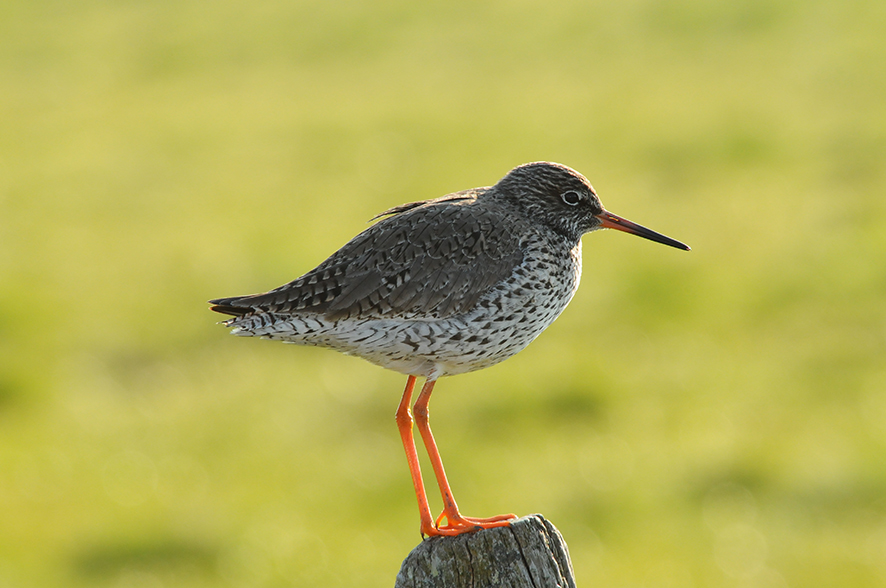Redshank
- The redshank’s burglar alarm
The redshank is a common breeding bird along the Danish coasts. It is easily recognised by the long red legs and a red beak with a black tip. However, it is its call that makes it stand out, particularly during the breeding season. If you step onto the bird's territory, a very persistent and monotonous alarm goes off and you are pursued by an infinite ”kly, kly, kly, kly ……” by the parents. They also try to scare away the birds’ four-legged enemies, such as foxes, cats and mink, by flying screeching around them.

A lifetime together
Redshanks become pairs that can stay together for life. Redshanks can live to be quite old; the oldest Danish redshank was over 27 years old. So a lucky redshank couple may get to celebrate their ”silver anniversary” with the same mate. The female lays four brown spotted eggs in the thick grass in meadows or bogs. Both the male and female help with the hatching of the eggs. Redshanks look for food on the mud flats and in shallow areas. The Wadden Sea is the main area for breeding and migrating redshank. Every year, 100,000 redshanks migrate through Denmark and in the autumn 10,000 redshanks stop to rest in the Wadden Sea area.
Facts
The redshank is a medium-sized wader with a length of 28 cm and a wingspan of 45-52 cm. The plumage is brown, and in flight, the characteristic white rear wing edges and the white wedge on the back can be seen. It has long red legs that are longer than the tail, which can be seen poking out from under the tail. The redshank feeds on various insects, worms, tadpoles and small amphibians, which it finds in shallow areas and mudflats. In Europe, the species mainly has an easterly and northerly distribution, but it is also scattered throughout western and southern Europe. Despite the decline in recent years, there are around 9,000 breeding pairs along the Danish coasts.


